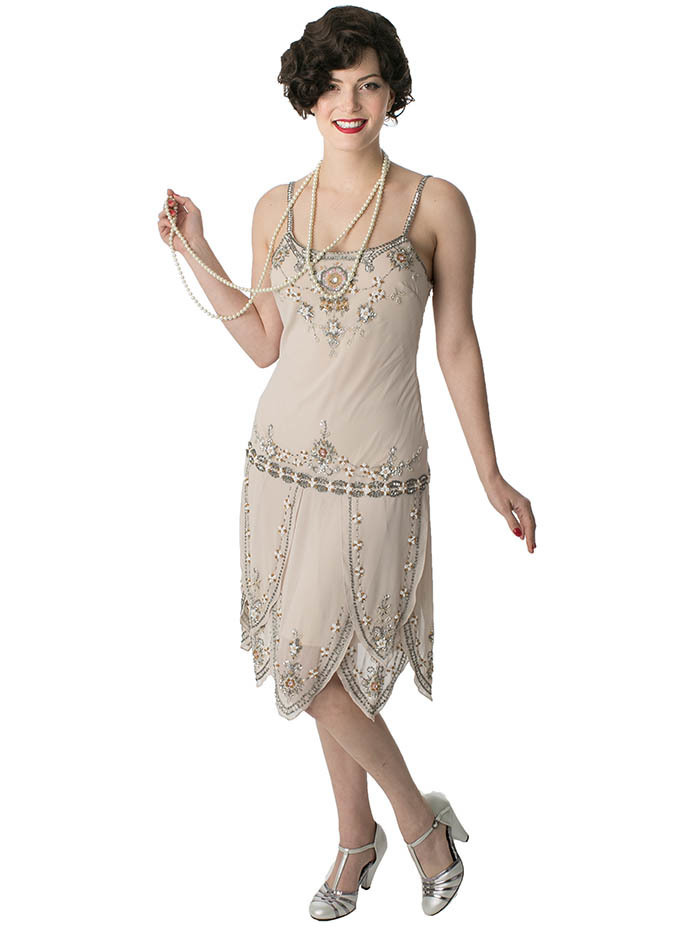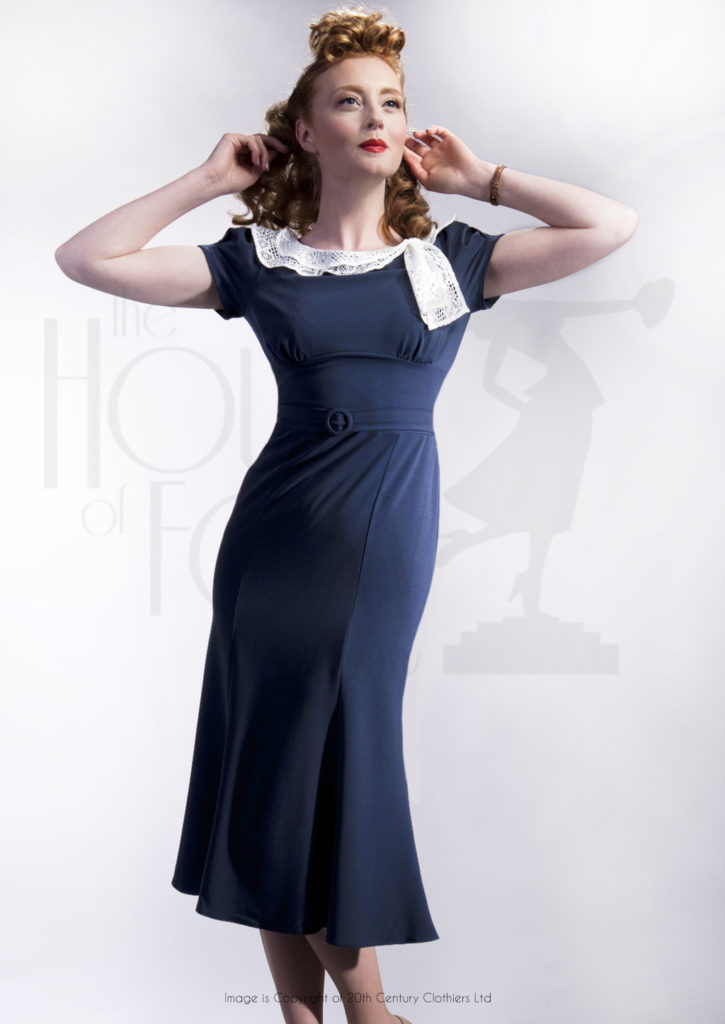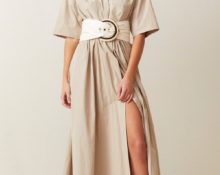Modern fashion is not characterized by any fundamental changes in the cut and style of clothing. Of course, the collections of famous designers are still interesting, we focus on them when creating our own image. However, such innovative ideas that permeated the fashion world in the period from the 1920s to the 1980s of the 20th century do not yet exist in the era of the 2000s. Maybe that’s why retro style has been so popular lately. This direction is quite multifaceted, and therefore provides ample opportunities for experimentation. Which retro dresses do you prefer? To find out, it’s worth understanding the variety of models in this area.
You can not only read the article, but also listen to it.
What is retro style, its features
Fashion of the 20th century is characterized by several bright periods. Each of them was accompanied by striking changes in the appearance of wardrobe items.Therefore, before considering modern models of retro dresses, it is worth deciding which styles are suitable for this style, which combines completely different cut options.
Ladies' outfits of the 20s and 30s are a reflection of women's desire for freedom and independence. Skirts steel more tomouthy and narrow, and decided to get rid of corsets altogether. The characteristic features of the dresses were a loose cut, low waistline, and broad shoulders. The fashion of that time is largely associated with outfits from the legendary Mademoiselle Coco, in particular, with her little black dress.

@ThingLink
The style icons of the 30s were Marlene Dietrich and Greta Garbo. Their outfits were distinguished by elegance and seductive femininity. The cut of the dresses ensured smooth lines of the silhouette; elongated and graceful models came into fashion, which were equipped with details such as pleating, various draperies (folds, clips), as well as other decorative elements. The outfits of this decade were the complete opposite of the boyish style of the 20s.

@retrowaste.com
In the war and post-war periods, minimalism dominated. Clothes of that time were characterized by closeness, practicality and functionality. It was then that the fashionable style today was born military. The end of the 40s was marked by the emergence of a luxurious and elegant trend New Look, created by Christian Dior. Dresses of that time had a tight-fitting bodice, full skirts and seductively emphasized the bust and shoulder line.

@delightfull.eu
50s fashion period called the era of Cristobal Balenciaga. The “inventions” of this innovator include a-line models, straight cut, loose tunic dresses, and high-waisted options.His outfits did not require wearing a corset or shapewear, and therefore were not only attractive in appearance, but also comfortable. Chanel continued to set her style - her dresses also made the waist visually thin thanks to a special cut line.

@omgthatdress.tumblr.com
60s fashion gave the mini length - dresses that revealed the legs above the knees became a recognized trend of the 20th century. As a rule, A-line models were relevant. In addition to such outfits, options with a bodice that fit strictly to the figure and a voluminous skirt were considered stylish. The trend was for plain or polka dot dresses.
In 1966, Yves Saint Laurent presented his safari-style collection for the first time. The models were made from practical natural fabrics in natural tones and were distinguished by a simple, loose cut.

All The Precious Things
The fashion of the 70s was largely influenced by the hippie movement. Ethnic, sports, disco, military, and safari trends were also popular. The trend was high-waisted maxi dresses - plain or with abstract prints - as well as mini A-line models with expressive elements of current trends.

@etsy.com

@Fashion dresses
The period of the 80s is an era that can be briefly described in one word - “too much”. Was in fashion sport style, bright colors, sparkles, rhinestones and mini length.
Retro dress models today
Modern images demonstrated by famous couturiers on the catwalks are often designed in a retro style. The fashion of the period 50–70 is especially relevant. Dresses of those years allow you to create a stylish, feminine and extraordinary outfit, demonstrating your impeccable taste and individuality. Let's see how a modern interpretation of models from the 1920s to 1980s can help create a retro look.
The style of the 20s will be demonstrated by a straight-cut dress with a low waist and an original skirt. Its bodice is quite simple, but the bottom is equipped with all kinds of draperies, folds, pleating, and can be multi-layered. Evening options differed from everyday ones in the use of more expensive fabrics and abundant decor - the cut of such models often left the arms and back exposed.

@Doris Lepinay

@etsy.com

@clbxg.com
Reference. Such outfits are also called Gatsby-style dresses. This concept appeared after the film adaptation of the novel about the American era of the 20s, which took place in 2013.
The elegance and charm of the 30s can be especially clearly demonstrated by a long silk evening dress. Cut according to the fashion of that time, “on the bias,” it beautifully fits the chest, waist, hips, and descends below in exquisite folds.

@thehouseoffoxy.com
For everyday wear, a straight-cut dress with a godet insert just below the hip line, length to mid-calf, with a belt emphasizing the waist, is suitable.

@thehouseoffoxy.com
Dresses in the new look style are especially popular today - with a tight-fitting bodice and a full skirt. To create an atmospheric look, knee-length or slightly lower models with a high waistline are perfect.

@The Foldline

@livingly.com
Dresses of the 60s and 70s were A-line styles with mini length or laconic safaris. The first ones can be plain or printed, as they say, in the spirit of that time - abstraction, geometry, painting, psychedelic design. As for the “hunting” trend in fashion, it is characterized by a laconic cut and design, monotony or a dosed presence of animal print.

@Modculture

@vogue.com
In addition, hippie outfits will help you create a retro look in the style of the 70s.

@New Idea
Fashionable outfits of the 80s were, first of all, catchy, short length and the principle of going from one extreme to another - either excessive tightness or excessive volume. Examples of dresses in the genre of this time, which is also called the early retro era, are short models with a large cuff instead of a skirt and bat sleeves, options with voluminous sleeves and an extended shoulder line.

@harpersbazaar.com
When creating a retro look, you should remember that a dress from any period of this fashion trend should not overlap with other current trends. To create a truly stylish outfit, you need to have a sense of proportion and correctly compose combinations. You can get into the atmosphere of a particular time and carefully study the features of clothing by watching old films or photos of stars who were considered style icons of those times.


 0
0





